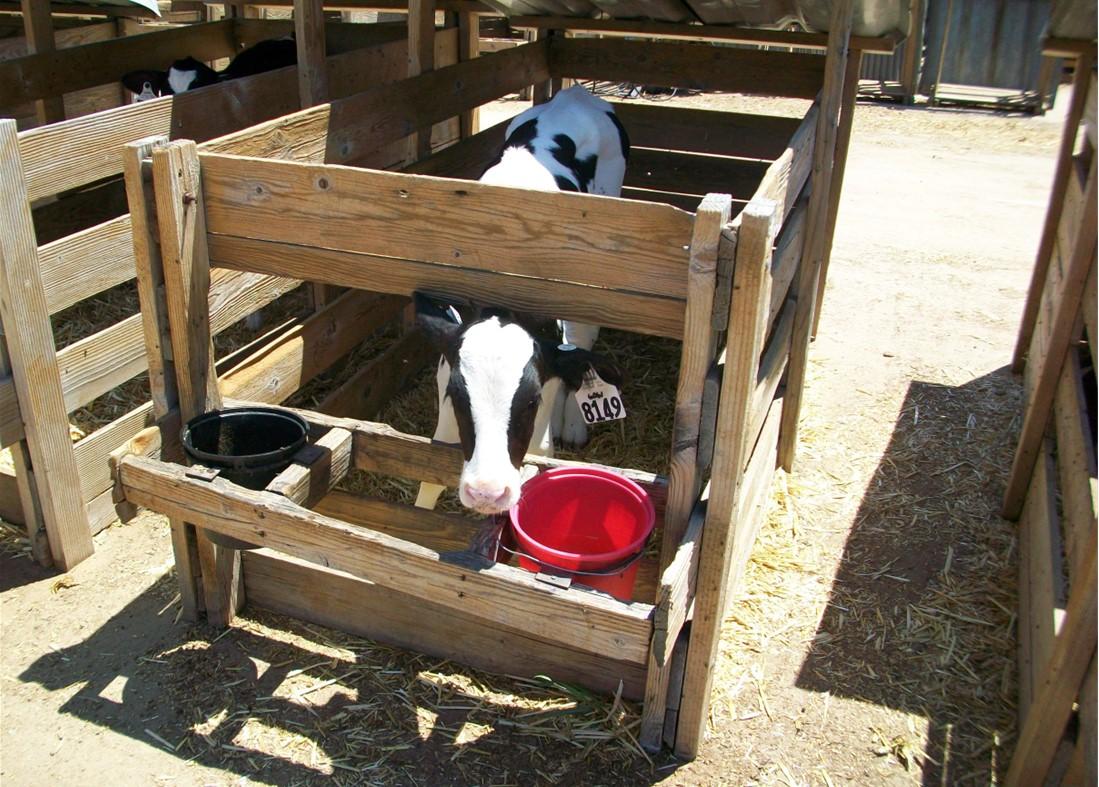
Focal point
|
You’ve probably heard it before: water is an important, yet overlooked, nutrient. The importance of water is not surprising, given that a cow’s body is comprised of more than 70% water. Like cows, calves also need to drink water to maintain proper health and achieve desired performance.
Most producers realize that dry matter intake is positively associated with water intake in lactating cows and that limiting water consumption reduces dry matter intake. The same is true for calves. In fact, cows, heifers, and pre-weaned calves will consume 4 pounds (1.8 liters) of water for every pound of dry feed. Limiting water intake can reduce daily gain and starter intake by 30% or more. Research has shown that calves will gain 0.12 pounds more per day and consume 0.18 pounds more starter per day for every additional liter of water consumed during the first 5 weeks of life. Because the amount of starter intake plays an important role in rumen development, it is important to do everything possible to encourage its intake throughout the pre-weaning period to promote a successful transition at weaning. Promoting water intake is part of this effort.
“Calves should not routinely be drinking their water bucket dry. If they are, offer more water.“
The National Dairy FARM Program mandates that pre-weaned calves have access to water starting at day 3 of life. This aligns with research that shows that calves who are offered water at birth had a 8% greater average daily gain during the pre-weaning period compared to calves offered water starting at 17 days of life. This difference was maintained well past the post-weaning period. Calves will typically consume less than 2 liters of water per day until around 3 weeks of age, after which daily water intake increases in proportion to the amount of starter consumed.
Tips for Encouraging Water Intake
There are a few, relatively simple steps that can be taken to encourage water intake in young calves. First, be sure to physically separate water and grain buckets. Water buckets placed adjacent to grain buckets get dirty quickly, which suppresses water intake and average daily gain. This also negatively affects starter intake not only because water intake is reduced, but also because the starter grain gets wet. Separating water and grain buckets with a divider or by placing them on opposite sides of the hutch or pen can help mitigate this issue. Second, replace water frequently, at least once daily, to promote intake. Not only does this help ensure that the water is clean, but the simple act of replacing the water encourages consumption. Third, make sure the water is the right temperature. Although it may be tempting to provide ice-cold water on a hot summer day, this can negatively impact water intake. Studies show that both calves and cows prefer to drink water that is 60-80°F, even in the summertime. Lastly, be sure to offer enough water. Calves should not routinely be drinking their water bucket dry. If they are, offer more water.
What about electrolyte solutions?
In most cases, water consumption is sufficient to meet hydration needs. Research shows that calves will increase water consumption when they lose about 4% of their body water. However, when calves lose more than 8% of their body water, they also lose important electrolytes. Dehydration often occurs when calves have scours (diarrhea) or during periods of significant heat stress when water is lost through increased respiration rate. Scours can deplete body water stores anywhere from 1 to 10% and beyond, so calves with scours should be treated with an electrolytes solution to help restore electrolyte balance.
Electrolyte solutions should be offered in conjunction with, not instead of, milk or milk replacer. A calf with scours may not consume all of its milk or milk replacer, but it should still be offered. Do not try to tube-feed a milk meal to a calf with scours. Providing electrolytes a few hours after a milk feeding is recommended because it reduces voluntary consumption issues related to gut fill as well as potential negative impacts on milk digestion and utilization. Unlike milk or milk replacer, if a calf refuses to drink electrolytes from a bucket or bottle, tube-feeding is recommended to help reverse dehydration.
When offering electrolytes, it is important to follow the mixing instructions on the package carefully to ensure that the proper osmolality is achieved. Adding electrolytes directly to the milk or milk replacer is not generally recommended because this can increase the osmolality and increase the risk of abomasal bloat.
Final Thoughts
Water consumption is absolutely essential for achieving optimal performance in young calves regardless of weather conditions. Taking steps to encourage water intake can promote starter intake and improve calf performance through weaning and beyond.
This article appears on October 4, 2022, in Volume 3, Issue 3 of the Maryland Milk Moos newsletter.
Maryland Milk Moo's, October 4, 2022, Vol.3, Issue 3
Maryland Milk Moos is a quarterly newsletter published by the University of Maryland Extension that focuses on dairy topics related to Nutrition and Production, Herd Management, and Forage Production. To subscribe to this newsletter, click the button below to enter your contact information.